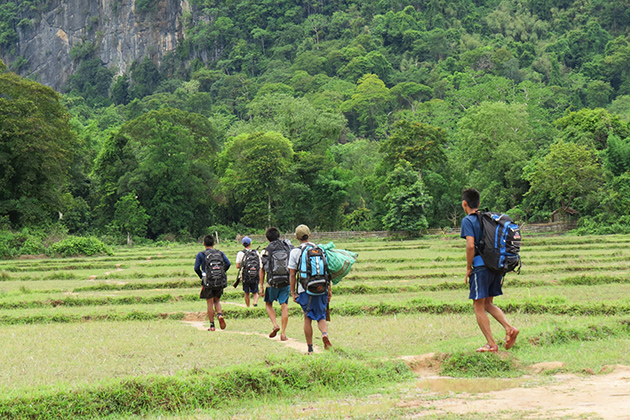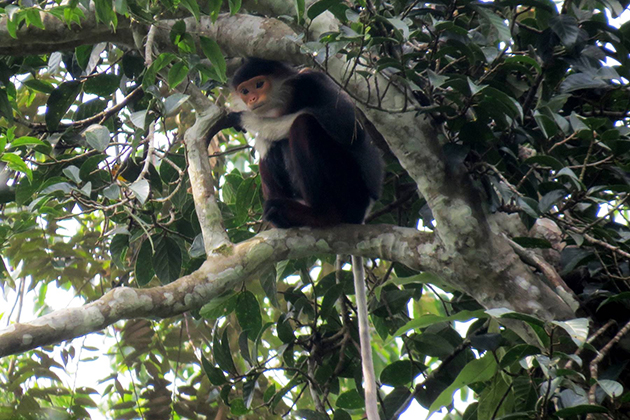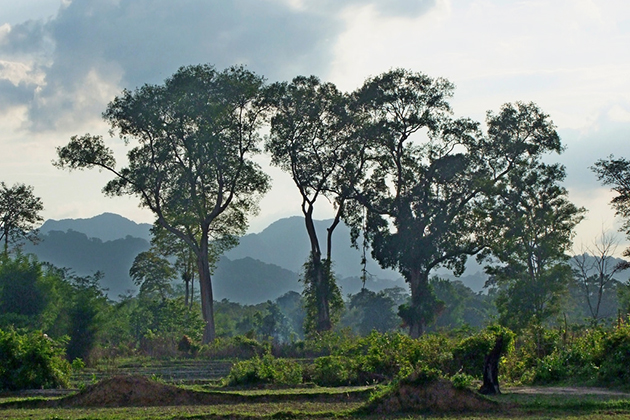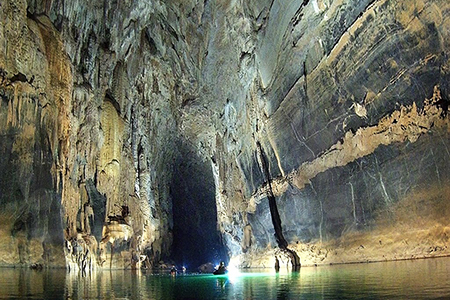The Hin Nam No National Protected Area is aiming to become Laos' first natural UNESCO World Heritage Site and a promising destination for Indochina vacation enthusiasts.
Located on the border of Vietnam and Lao, the Hin Nam No National Protected Area stretches over 88,500 hectares and is the largest karst regions on the planet. Hin Nam No has an untouched beauty, set apart by remarkable limestone formations. It is home to a diversity of animals and plants, including globally threatened species, endemic species, and karst specialist species.
There are roughly 20 towns that are scattered around this national protected area with the total population of 7,000 people (2005), many of which are ethnic minorities. The majority of locals is exceptionally poor and heavily depends on natural resources from within the protected area for a living. Poaching and illegal logging are putting a heavy burden on Hin Nam No's sensitive ecosystem. Therefore, people are hoping that once the area made it onto the list of UNESCO’s Natural World Heritage, conservation of the land will be ensured and help maintain its biodiversity.
Outhivong – Deputy Governor of Laos hopes that once Hin Nam No is nominated as a World Heritage Site, it will attract both local and international tourists, and thereby generate incomes for local communities. More importantly, he expects that tourism will improve the livelihood of local communities and ensure their food security as well as alternative income generation.”
“With its huge potential for eco-tourism, if Hin Nam No becomes a Natural UNESCO World Heritage Site, it will benefit national socio-economic development tremendously, especially for Khammouane people,” said Saphouvong, Vice Minister of Information, Tourism, and Culture.
“Becoming a World Heritage Site will also ensure the conservation of this area, and encourage better management of natural resources in and around it, which later help promote ecotourism and scientific research,” he added.
Earlier this January in Hanoi, the Lao and Vietnamese governments signed a Memorandum of Understanding, guaranteeing that Vietnam will show a wholehearted support to turn Hin Nam No National Protected Area into a transboundary World Heritage Site together with the already established World Heritage Site Phong Nga Ke Bang (PNKB) National Park in Quang Binh, Vietnam since the two share a common border.
Hin Nam No is believed to have “outstanding universal value” that is promising to become a famous tourist destination, offering its local villages a lot of advantages. These values need strong protection and therefore need a strong commitment from the highest level and by all stakeholders. People are looking forward to creating a sustainable tourism industry that complements the long-term protection of the natural values and local culture of the region.
As you embark on your Laos tour, be prepared to immerse yourself in the breathtaking beauty and unparalleled natural wonders of Hin Nam No. From exploring intricate cave systems to marveling at the diverse flora and fauna, this future UNESCO site offers a truly extraordinary experience. Don't miss the opportunity to witness the magnificence of Hin Nam No and be among the first to appreciate its remarkable significance as Laos' inaugural natural UNESCO World Heritage Site.

